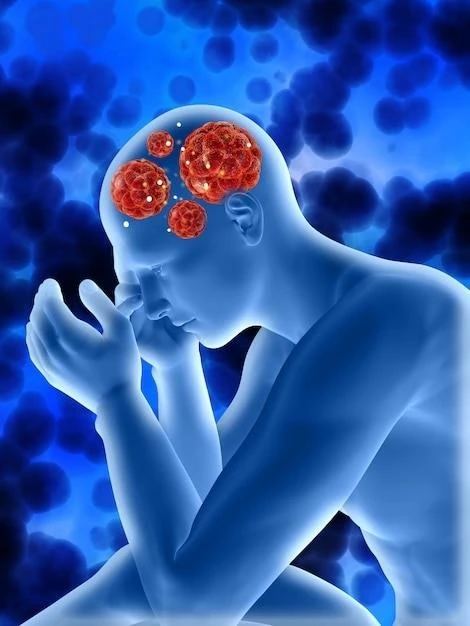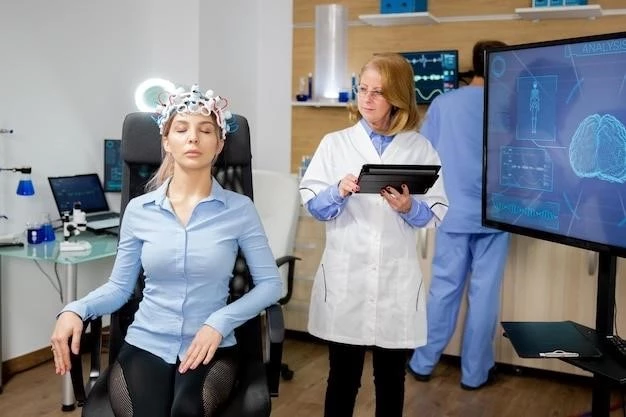Double Cortex
Introduction
Double cortex‚ also known as subcortical band heterotopia‚ is a rare neurological disorder that affects the development of the brain’s cortex. This condition arises from a genetic mutation that disrupts the migration of neural cells during fetal development. As a result‚ individuals with double cortex have abnormal bands of gray matter located beneath the outer layer of the brain.
Individuals with double cortex may experience a range of symptoms‚ including epilepsy‚ developmental delays‚ and intellectual disabilities. The diagnosis of this disorder often involves neuroimaging techniques to visualize the brain’s structure and identify the characteristic malformations.
Research into double cortex has led to advances in understanding the genetic basis of the disorder and potential treatment approaches to manage symptoms and improve quality of life for affected individuals. In this article‚ we will explore the complexities of double cortex‚ its impact on development and function‚ as well as the current approaches to diagnosis and treatment.
Understanding Double Cortex
Double cortex‚ or subcortical band heterotopia‚ is a rare neurological disorder characterized by a malformation in the brain’s cortex. This malformation results from genetic mutations that disrupt the migration of neural cells during brain development. As a consequence‚ individuals with double cortex have abnormal bands of gray matter located beneath the brain’s outer layer.
These malformations in the cortex can lead to various neurological symptoms‚ with epilepsy being a common manifestation in affected individuals. The presence of these abnormal neuronal structures can impact the brain’s electrical activity‚ increasing the likelihood of seizures.

Understanding the genetic underpinnings of double cortex has been a major focus of research in the field of neurology. Scientists have identified specific genetic mutations associated with this disorder‚ shedding light on the mechanisms underlying brain development and the formation of the cortex.
Neuroimaging techniques play a crucial role in visualizing the structural abnormalities present in individuals with double cortex. Magnetic resonance imaging (MRI) and computed tomography (CT) scans allow healthcare providers to identify the characteristic features of this condition and aid in the diagnosis and treatment planning.
Symptoms and Diagnosis
Individuals with double cortex may present with a variety of symptoms‚ including epilepsy‚ developmental delays‚ intellectual disabilities‚ and cognitive impairments. Epilepsy is one of the most common features of this disorder‚ with individuals experiencing recurrent seizures due to abnormal neuronal activity in the affected brain regions.
The diagnosis of double cortex typically involves a combination of clinical assessments‚ genetic testing‚ and neuroimaging studies. Neurologists evaluate the patient’s symptoms‚ medical history‚ and perform neurological exams to assess cognitive and motor function. Genetic testing can help identify specific mutations associated with double cortex‚ providing valuable insights into the underlying cause of the disorder.
Neuroimaging techniques‚ such as magnetic resonance imaging (MRI) and computed tomography (CT) scans‚ play a crucial role in visualizing the structural abnormalities present in the brain. These imaging studies reveal the characteristic bands of gray matter beneath the cortex‚ aiding in the diagnosis of double cortex and differentiation from other neurological conditions.
Early and accurate diagnosis of double cortex is essential for developing personalized treatment plans that address the individual’s specific symptoms and needs. By understanding the symptoms and utilizing advanced diagnostic tools‚ healthcare providers can effectively manage the challenges associated with this complex neurological disorder.
Treatment Approaches
While there is currently no cure for double cortex‚ treatment approaches focus on managing symptoms and improving the individual’s quality of life. The management of epilepsy‚ a common symptom of this disorder‚ often involves antiepileptic medications to help control seizures and reduce their frequency and severity.
Individuals with double cortex may benefit from early intervention programs that address developmental delays and intellectual disabilities. These programs can include speech therapy‚ occupational therapy‚ physical therapy‚ and educational support tailored to the individual’s unique needs.
In some cases‚ individuals with severe symptoms of double cortex may be candidates for surgical intervention. Epilepsy surgery‚ such as resective surgery or corpus callosotomy‚ may be considered in cases where seizures are not controlled with medication or when they significantly impact the individual’s quality of life.
Supportive therapies‚ including behavioral therapy and cognitive rehabilitation‚ can also play a crucial role in enhancing cognitive function and adaptive skills in individuals with double cortex. These interventions aim to maximize the individual’s independence and overall functioning.
As research into double cortex continues to advance‚ novel treatment approaches may emerge to target the underlying genetic mechanisms of the disorder. Gene therapy and other emerging technologies offer promising avenues for future treatment options that may help address the root causes of double cortex and improve outcomes for affected individuals.
Impact on Development and Function
Double cortex can have a significant impact on both the development and function of the brain. The malformations in the cortex disrupt the normal organization of neural circuits‚ affecting cognitive processes‚ motor skills‚ and overall brain function in individuals with this disorder.
Children with double cortex may experience delays in reaching developmental milestones‚ such as walking‚ talking‚ and social interactions. The abnormal neuronal architecture can impair the brain’s ability to process information efficiently‚ leading to challenges in learning‚ memory‚ and executive function.
Individuals with double cortex may also face difficulties with motor coordination and control due to disruptions in the brain’s structure. Fine motor skills‚ balance‚ and coordination may be affected‚ impacting activities of daily living and overall quality of life.
The impact of double cortex on cognitive function can vary among individuals‚ ranging from mild to severe impairments in intellectual abilities. Some individuals may have average intelligence with specific learning challenges‚ while others may experience more profound cognitive deficits that require specialized support and interventions.
Understanding the complex interplay between brain development‚ neural connectivity‚ and cognitive function in individuals with double cortex is essential for providing comprehensive care and support tailored to their specific needs. By addressing the developmental and functional challenges associated with this disorder‚ healthcare providers can help individuals with double cortex achieve their full potential and improve their overall quality of life.
Conclusion
In conclusion‚ double cortex‚ or subcortical band heterotopia‚ is a complex neurological disorder characterized by malformations in the brain’s cortex due to genetic mutations. This condition can lead to a range of symptoms‚ including epilepsy‚ developmental delays‚ and cognitive impairments.
Advances in genetic research and neuroimaging techniques have enhanced our understanding of the underlying causes of double cortex and improved diagnostic capabilities. Early and accurate diagnosis is crucial for implementing personalized treatment approaches that address the individual’s specific symptoms and needs.
Treatment strategies for double cortex focus on symptom management‚ supportive therapies‚ and‚ in some cases‚ surgical interventions to improve quality of life. While there is currently no cure for this disorder‚ ongoing research into gene therapy and other innovative approaches offers hope for future treatment options that target the root causes of double cortex.
By recognizing the impact of double cortex on development and function‚ healthcare providers can provide comprehensive care and support to individuals affected by this rare neurological disorder. Through a multidisciplinary approach that encompasses medical‚ therapeutic‚ and educational interventions‚ individuals with double cortex can work towards maximizing their potential and enhancing their overall well-being.
